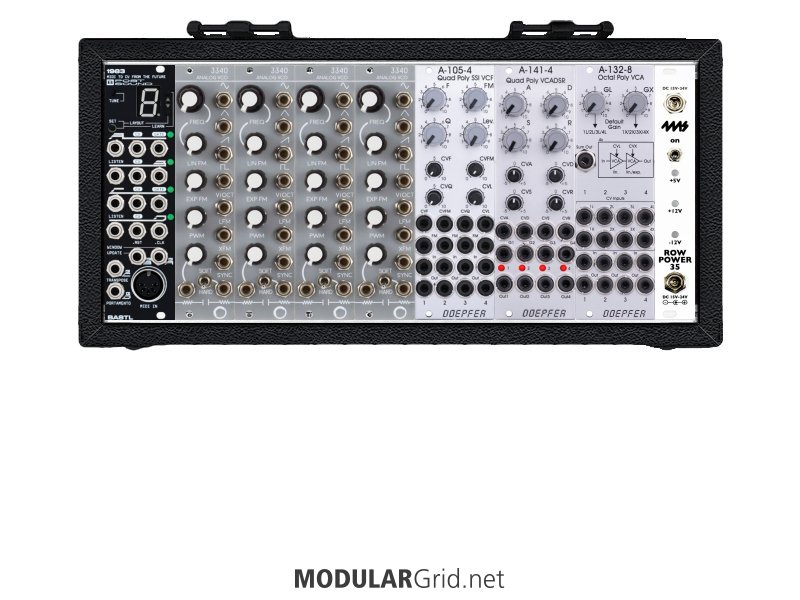Polyphony is the big one, right? Perhaps one isn't (shouldn't be?) trying to recreate a Jupiter 8, but having polyphony opens up some interesting sonic possibilities, especially if you're not just trying to map chords.
I've been working to create the simplest polyphonic modular group and I think I've done it with this example rack. I chose four VCOs over the usual three so to have the opportunity to play a triad chord and then have a remaining voice for lead lines, wherever they may fit in. The Bastl 1983, while functional, isn't perfect. It doesn't seem to track consistently and that may be the result of the Arturia Keystep 37 I'm using as a controller, but it works well enough. I'm still experimenting.
I've set this up to use it in two ways. First, as a four voice system using the VCOs patched directly through each input on the Doepfer modules and then the sum out from the A-132-8 goes off to the mixing desk. The second iteration takes two of the four voices into each of the two inputs on the 860s, which I then take the summed outputs on each to the Tallin VCA and then tracked to stereo using the Strymon line amp. It works really well, except that the 860s, while incredibly warm and well matched to the 3340s, don't really range far and wide in terms of waveshaping. They're straight up analog filters based on the Roland circuits used in the 80's-era Juno and Jupiter synths. The sound is really warm and juicy. I can get super F-A-T bassy notes out of it patched like that.
What do you think? Have you tried to create polyphony? Any other ideas for a MIDI or CV processor that will create and track notes across 7 octaves? I'd love to hear your thoughts and ideas on this interesting channel of modular synth building.
"I'll just plug this in here and see what happens."


